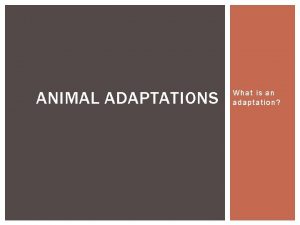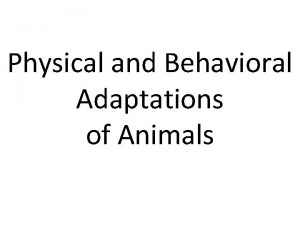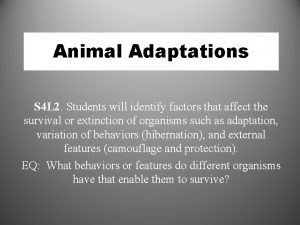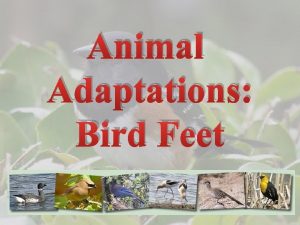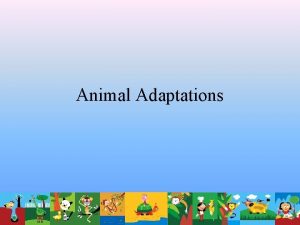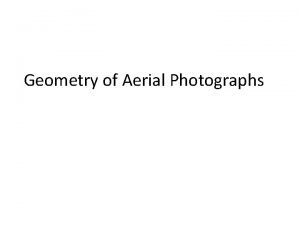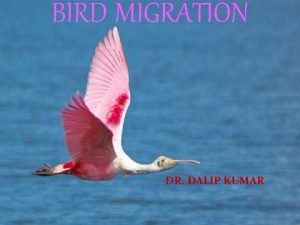AERIAL ADAPTATIONS DR DALIP KUMAR AERIAL ADAPTATIONS Animals













- Slides: 13

AERIAL ADAPTATIONS DR. DALIP KUMAR

AERIAL ADAPTATIONS • Animals that can fly and spend a lot of their time in the air are called AERIAL ANIMALS. • AERIAL ADAPTAIONS ARE OF TWO TYPES : ØPRIMARY AERIAL ADAPTATIONS ØSECONDARY AERIAL ADAPATIONS

PRIMARY AERIAL ADAPTATIONS • It is generally shown by the BIRDS. • HOLLOW BONES : to makes their body light • STREAMLINED BODY : able to cut through the air easily • Modification of forelimbs into wings • Light weight beak • Bipedal locomotion • Short tail • Feathers • Gonads are developed only during breeding season.

SECONDARY AERIAL ADAPTATIONS It is shown by : fishes , amphibians , reptiles , mammals.

FLYING FISH (EXOCOETUS) • Flying fish can make powerful , self propelled leaps out of water into air , where their long , wings like fins enable GLIDING flight for considerable distance above water surface. • pectoral fins are large and help the fish to escape from predator. • It is a marine fish. • It can glide over 200 mts. once it nears the surface again, it can flat its tail and move again without returning to the water • Curved profile of WINGS is comparable to aerodynamic shape of bird wing.


FLYING DRAGON ( DRACO ) • The are ARBOREAL INSECTIVORES. • They are able to glide long distances using their wing-like , patagial membranes supported by elongated thoracic ribs to generate lift forces. • A small set of flaps on the neck serve as horizontal stabilizers. • The length of these lizards id 20 cm but can glide as long as 60 mts.


BAT • 70% of bat species are insectivorous. • Wings are covered with leathery skin called PATAGIUM powered by large muscles in the body • Forelimbs are webbed • MERKEL CELLS are touch – sensitive receptors. • Bat ECHOLOCATION is a perceptual system where ultrasonic sounds are emitted specifically to produce echoes.


FLYING FROG ( RHACOPHOROUS) • These frogs have long toes with strong webbing between them , enabling the animals to slow their fall to glide. • It is a type of FLYING FROG which can descend aerially , but at angles sharper than 45 degree • There is a wide flap of skin on outer edge of forearm.


THANK YOU
 Https://a-z-animals.com
Https://a-z-animals.com Consumers producers and decomposers
Consumers producers and decomposers Detritus food chain
Detritus food chain Carnivore
Carnivore Freshwater animals adaptations
Freshwater animals adaptations Marine species
Marine species Location
Location Predator adaptions
Predator adaptions Duck physical adaptations
Duck physical adaptations How do adaptations help animals? *
How do adaptations help animals? * Marine animals with unique adaptations
Marine animals with unique adaptations Taiga plant adaptations
Taiga plant adaptations Animal feet adaptations
Animal feet adaptations Freshwater animals adaptations
Freshwater animals adaptations







